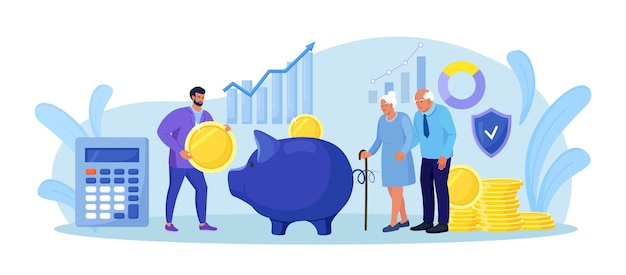
Unleashing the Power of Dividends: A Comprehensive Guide to Building a Retirement Nest Egg.

Title: Enjoying a Dividend-Funded Retirement: What Do You Need?
Earning money from investments such that one can live comfortably in retirement is an appealing thought. Imagine not having to depend on your current job or withdraw from your investment savings. This dream can become a reality with some careful planning and discipline.
This article delves into everything you need to know about dividend investing and the possibility of supporting your living expenses through such earnings.
Here’s the basic idea: when a company makes a profit, it can either reinvest that back into the business for growth or share the profit with its shareholders as dividends. Commonly, companies opt for a mix of the two. As a shareholder, you can either take these dividends as cash or reinvest them to buy more shares. If you’re looking to make dividends your primary retirement income, you’ll be taking this money as cash to cover your living expenses, freeing you from a regular job.
Enjoying constant dividends means that your retirement portfolio can keep growing because you’re not withdrawing from it. In an ideal scenario where your expenses stay lower than your dividend earnings and your investments don’t decrease in value, you could live off dividends indefinitely.
Life, however, does get more expensive over time, so your dividend income must keep up. Luckily, many companies regularly increase their dividend payouts, often moving faster than inflation. If you’re investing wisely, your growing dividend income should cover long-term inflation.
Remember, using dividends to support your lifestyle is just one option. Covering just a part of your expenses with passive dividend income could still greatly impact your life. For instance, earning an extra $1,000 – $2,000 a month may permit you to retire early, or allow you to quit your full-time job by combining your dividends with money from a part-time gig.
Dividends can come from various investment types. Stocks from large, well-known companies are popular, along with mutual funds or ETFs that include dividend-paying stocks. You can even opt for real estate investment trusts (REITs) to get your hands-on real estate dividends without owning any property.
Think carefully about the type of dividend yield you should expect. As a rule of thumb, aim for a dividend yield of around 2-5%.
Determining how much you’d need in your portfolio to retire on dividends greatly depends on how much you spend each year and the yield your investments produce. Generally, to fully cover expenses with dividend income, an average person would need a portfolio worth at least $1 million. A $2 million portfolio would likely provide a quite comfortable lifestyle.
If the value of your portfolio and dividends grows over time, so will your dividend income. It’s also important to note that your income need not come solely from dividends. Most retired Americans receive an income from social security or pensions, which can aid in cutting down how much you need from dividends.
Financial independence demands long-term focus. If you wish to retire on dividends, you’ll need to commit to steadily building your investment balance and giving your investments time to grow. It may seem like a daunting task to cover your expenses with investment income, but by dedicating several years towards this goal, it becomes achievable.
There are also alternatives to dividend-paying stocks. Platforms like Fundrise let you invest in real estate and receive regular dividends, all while allowing for easier management.
To wrap up, living purely off dividends might seem challenging, but it’s undoubtedly an achievable goal. Even if you’re unable to cover all your expenses via dividends, supplementing your income in this manner can still bring financial freedom. Other income sources like social security, pensions, or a side job can also act in tandem with your dividend income, ensuring a comfortable retirement life.


